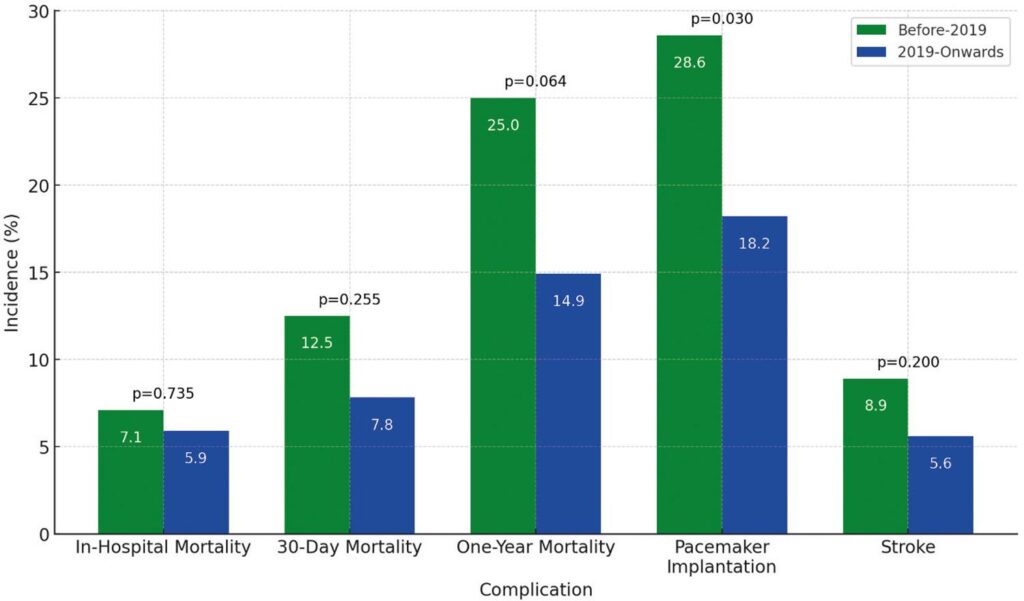International Journal of Cardiovascular Sciences. 19/Sep/2025;38:e20240243.
Impact of Updated Guidelines on TAVI Outcomes in a Health Maintenance Organization in Brazil: A Decade-Long Retrospective Study
Introduction
Aortic stenosis is one of the most common and serious valve diseases, particularly affecting the elderly population. This progressive condition, characterized by the narrowing of the aortic valve, leads to obstructed blood flow from the heart, resulting in significant morbidity and mortality if left untreated. Traditionally, the gold standard for treating severe symptomatic aortic stenosis has been surgical aortic valve replacement (SAVR), which has proven to be highly effective. However, SAVR is associated with substantial surgical risks, particularly in elderly patients and those with multiple comorbidities.–
In response to these challenges, transcatheter aortic valve implantation (TAVI) emerged in 2002 as a less invasive alternative to SAVR. Initially, TAVI was indicated for patients with prohibitive surgical risks who were unsuitable for SAVR. Over time, robust clinical data and advancements in technology have expanded TAVI’s indications to include patients with intermediate and even low surgical risks. Studies have demonstrated that TAVI offers comparable, if not superior, outcomes to SAVR across various risk profiles. Additionally, TAVI procedures are associated with shorter hospital stays, quicker recovery times, and lower rates of complications such as severe bleeding and atrial fibrillation, making it an increasingly preferred option.,
[…]
173

